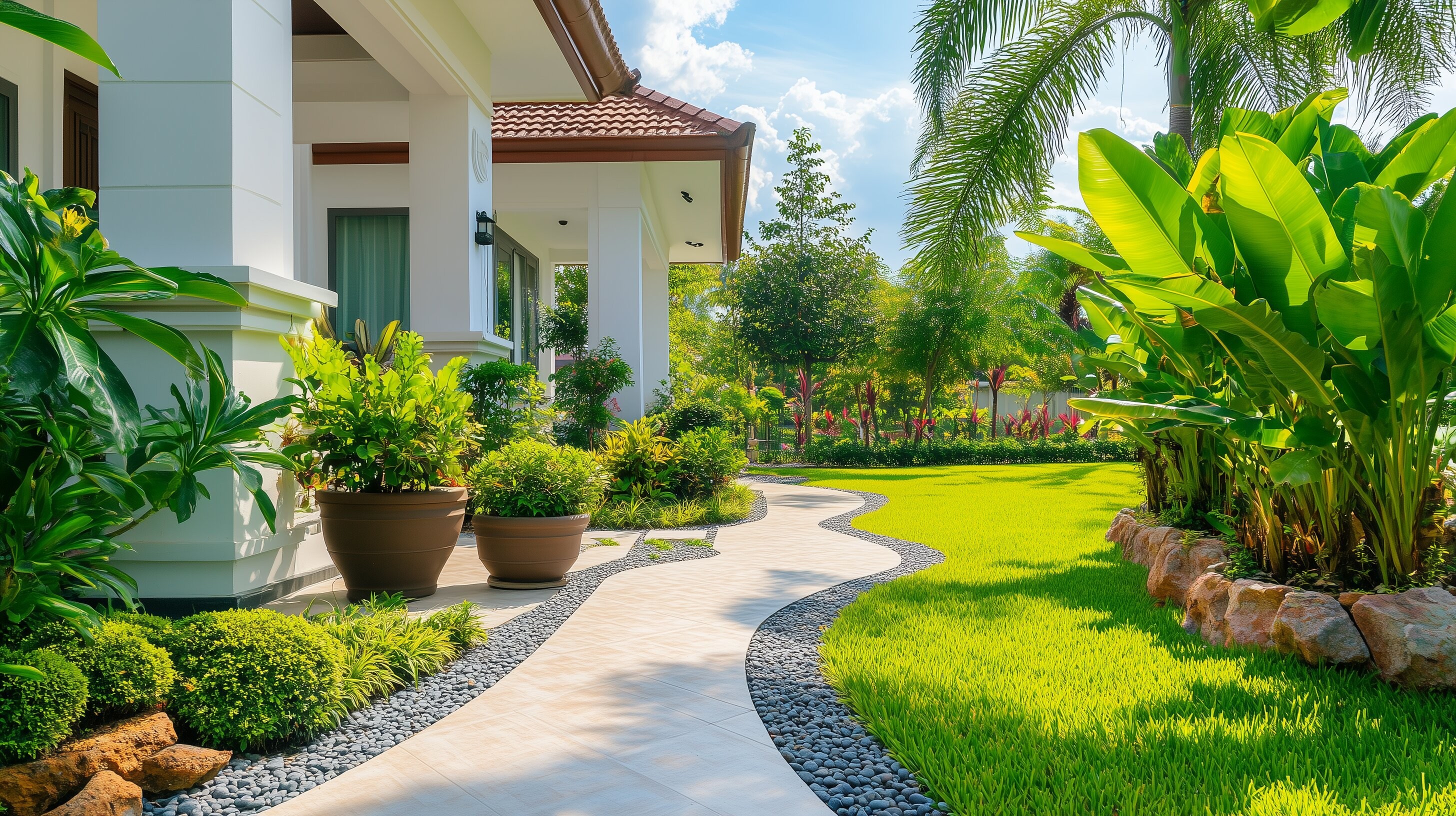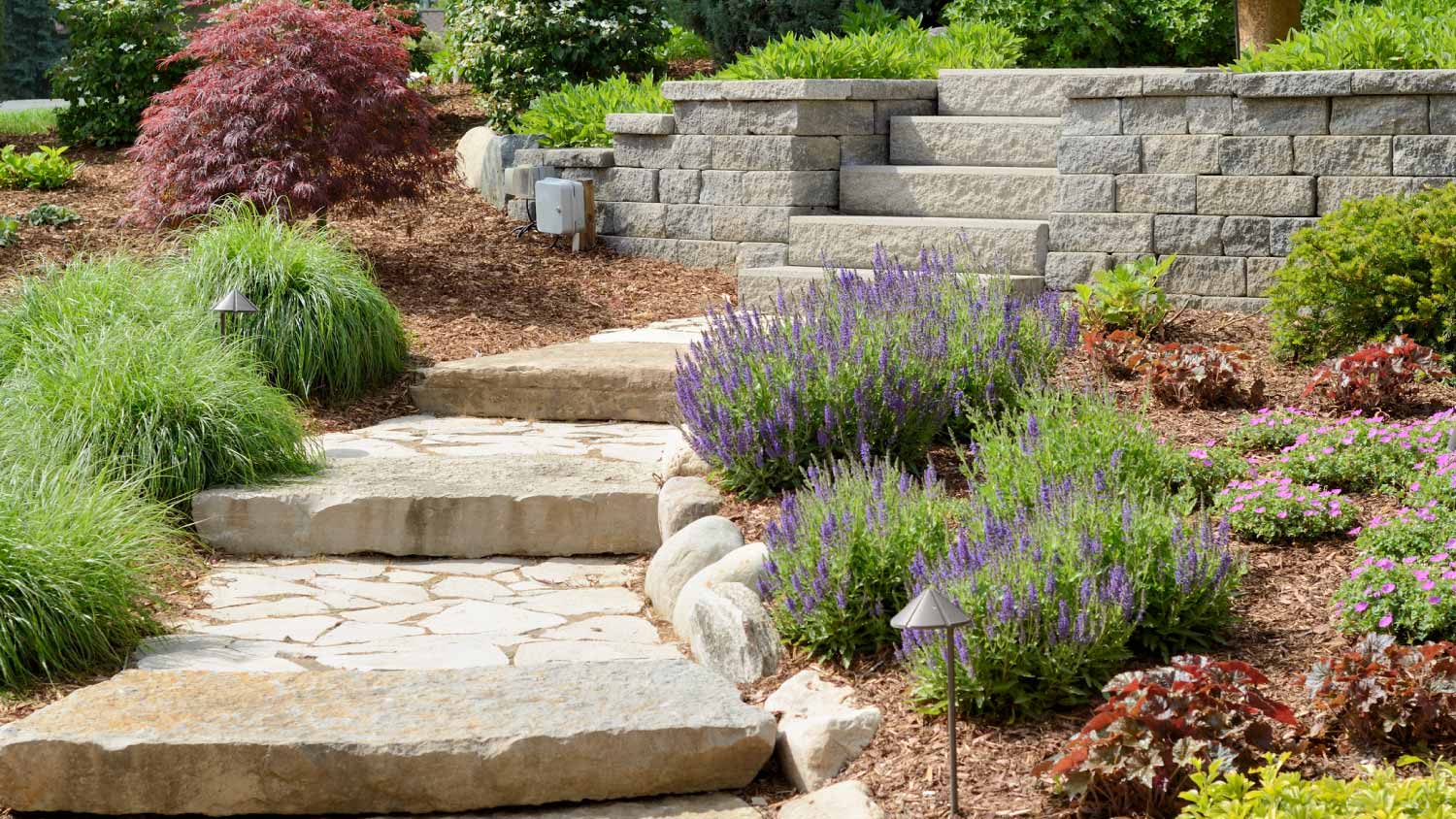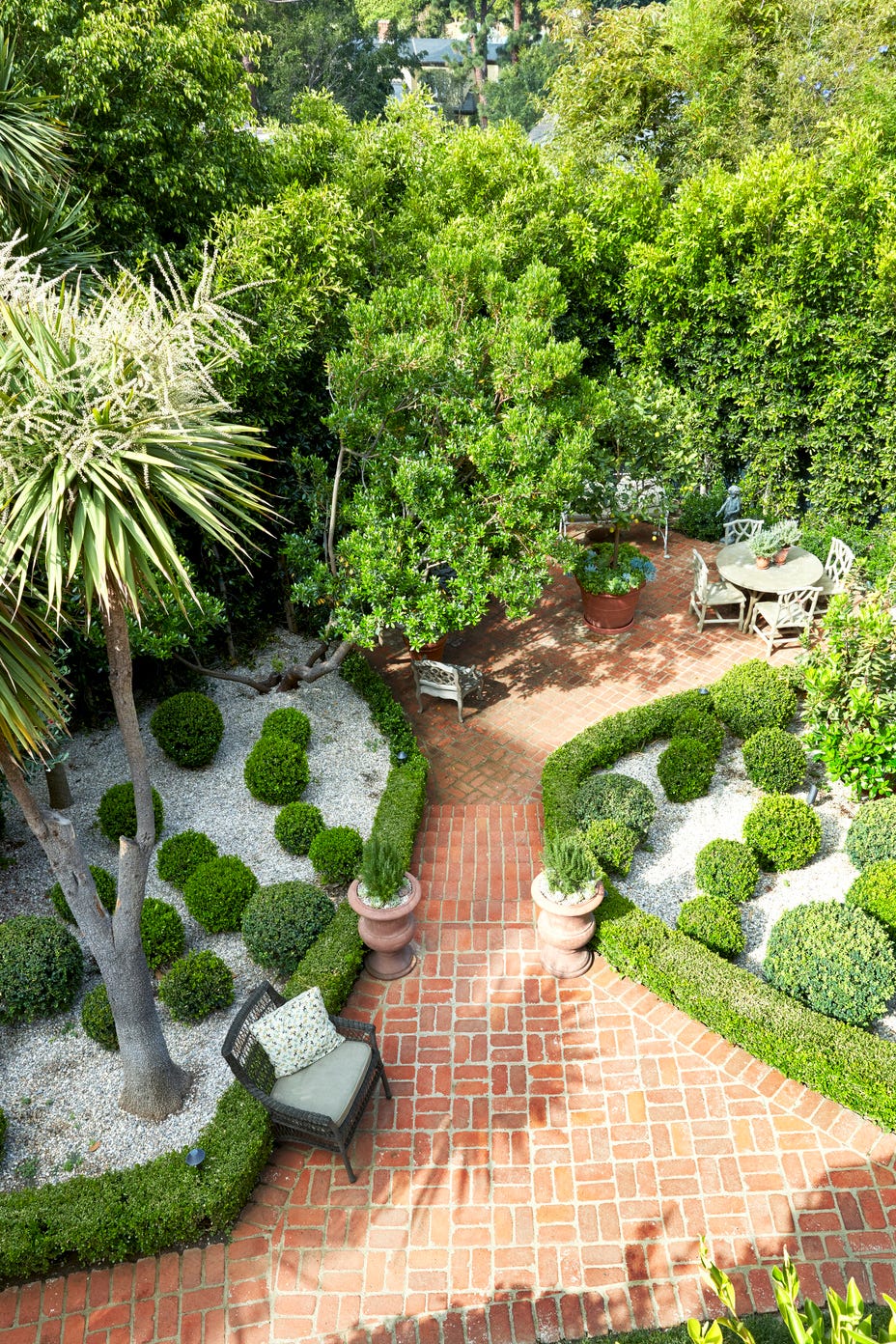Choosing the Right Components for a Long-Lasting BBQ Island Installation
Exploring Various Sorts Of Landscape Design to Enhance Your Outdoor Atmosphere
Landscaping plays an important role in specifying exterior spaces. Different designs, from standard gardens to modern minimalist styles, provide distinct advantages for enhancing aesthetic appeals and feature. Incorporating elements like xeriscaping and indigenous plants can add to ecological equilibrium. Understanding the interaction of hardscape and softscape is necessary for creating welcoming atmospheres. The selections offered can be overwhelming, motivating one to assess which style finest lines up with their vision for an exterior haven.
Typical Yard Landscaping

While numerous modern yards embrace minimalism and indigenous plantings, traditional yard landscape design continues to be a treasured approach that highlights symmetry, framework, and decorative functions. This style commonly integrates official geometric designs, where pathways, bushes, and flowerbeds are arranged with accuracy. Central centerpieces, such as sculptures or water fountains, draw the eye and provide a feeling of harmony.Traditional landscaping often includes a range of plant kinds, showcasing seasonal blossoms and evergreen elements. Traditional shrubs, perennials, and annuals develop lively shades and structures throughout the year. Additionally, trellises, arcs, and pergolas include upright interest and act as support for climbing up plants, improving the general aesthetic.The use all-natural materials, such as rock and wood, additional enhances the traditional landscape, adding to a classic top quality. Inevitably, this design invites leisure and enjoyment, making it a cherished selection for those seeking a stunning outdoor atmosphere.
Modern Minimalist Landscape Design
Modern minimal landscaping emphasizes simpleness and capability, defined by tidy lines and open rooms. Key characteristics include a limited plant scheme and thoughtful hardscape layout that focuses on use and aesthetic allure. Efficient plant choice approaches better boost the minimal strategy, producing relaxing outside settings that urge relaxation and contemplation.
Key Attributes of Minimalism
A growing trend in landscaping is the welcome of minimalism, characterized by simplicity and performance. Minimalist landscape design concentrates on clean lines, open rooms, and a minimal shade palette, advertising a feeling of tranquility. Elements are thoroughly curated to stay clear of mess, permitting each component to stand apart. Using all-natural materials, such as rock and wood, improves the organic feeling while keeping an aesthetic balance. Furthermore, minimalist layouts typically integrate geometric shapes, which can produce aesthetic rate of interest without overwhelming the detects. Water functions might be included, acting as centerpieces that enhance tranquility. Generally, minimalism in landscape design emphasizes the elegance of restraint, permitting nature's inherent qualities to beam through in an unified exterior setting.
Plant Selection Approaches
Efficient plant selection is essential for accomplishing the wanted aesthetic in modern-day minimal landscaping. The focus needs to get on simplicity, utilizing a limited palette of plants that complement each other and the surrounding setting. Indigenous plants are often excellent, as they call for much less upkeep and water, promoting sustainability. Selecting species with differing structures and heights can add visual passion without overwhelming the area. Grouping plants in clusters instead than spreading them enhances communication and strengthens the minimalist motif. Evergreen varieties can supply year-round structure, while seasonal flowers introduce refined color adjustments. Eventually, the objective is to produce a peaceful outdoor space that embodies serenity and harmony with thoughtful plant options.
Hardscape Style Principles
Crucial aspects in hardscape design significantly add to the overall visual appeals and performance of minimalist landscape design. This layout strategy stresses clean lines and understated products, creating a minimalist aesthetic experience. Trick parts consist of pathways, patios, and retaining walls, which not just specify rooms yet also boost accessibility and functionality. Using products such as concrete, rock, and wood prevails, reflecting a natural yet modern visual. Integrating geometric forms and in proportion formats further enhances the minimal viewpoint, permitting a harmonious mix with surrounding plant. Furthermore, proper drainage and disintegration control are vital considerations, making certain long life and sustainability. Inevitably, effective hardscape layout serves as a foundation that enhances softscape aspects while keeping balance and simpleness in outdoor atmospheres.
Cottage-Style Landscaping
Cottage-style landscape design uses a wonderful approach to creating inviting outdoor rooms. By including charming plant combinations, this style cultivates a sense of warmth and fancifulness. The focus on comfortable, well-defined areas motivates relaxation and enjoyment of nature.
Enchanting Plant Combinations
Many home owners seek to develop a picturesque outside space, attaining the charm of cottage-style landscaping commonly pivots on thoughtful plant mixes. Vivid blossoms, lavish vegetation, and aromatic natural herbs can be skillfully combined to evoke a sense of whimsy and fond memories. Integrating lavender, daisies, and foxgloves develops a vibrant tapestry that attracts pollinators while providing a delightful scent. Incorporating ornamental grasses like miscanthus can add structure and movement, complementing the softer blossoms. In addition, mixing yearly and perennial plants warranties continual shade throughout the seasons. Making use of climbers, such as clematis or honeysuckle, can enhance upright interest. Generally, these mixes not just beautify the landscape however also cultivate a charming and inviting environment.

Comfy Outdoor Spaces
Creating cozy outdoor spaces needs a mindful mix of comfort and appeal, enhancing the dynamic plant mixes discovered in cottage-style landscape design - Retaining Wall Installation. These areas often feature welcoming seating setups, such as weathered wooden benches or supported chairs bordered by rich plant. Soft lights, like fairy lights or lanterns, adds heat, changing the space into a relaxing resort. Incorporating components such as trellises embellished with climbing roses or aromatic natural herbs improves sensory experiences. In addition, pathways made of rustic rocks invite exploration and connection with nature. Ornamental touches like birdbaths or whimsical garden art add to a sense of whimsy. Ultimately, the goal is to develop a charming ambience that motivates relaxation and enjoyment of the appeal bordering these comfy outside places
Xeriscaping for Water Preservation
Just how can communities stabilize visual landscaping with journalism demand for water conservation? Xeriscaping becomes a feasible solution, promoting sustainable techniques that minimize water usage while enhancing exterior appeal. This find out here now landscaping approach concentrates on utilizing drought-resistant plants belonging to the area, which need significantly much less water than traditional gardens. By integrating compost and efficient irrigation systems, xeriscaping reduces evaporation and drainage, more saving valuable water resources.Communities can create aesthetically attractive landscapes with mindful planning, picking a varied range of structures and colors that thrive in dry conditions. Furthermore, xeriscaping motivates making use of ornamental rocks and ornamental gravel, supplying attractive and useful alternatives to yard yards. As neighborhoods accept this eco-friendly technique, they not just decrease their water usage but also advertise biodiversity and resilience in their neighborhood communities. Ultimately, xeriscaping works as a demonstration of the consistency in between aesthetic appeal and environmental obligation.
Hardscape Layout Aspects
Hardscape design components play a necessary function in enhancing outside areas by supplying structure and performance. These non-plant attributes, such as outdoor patios, decks, pathways, and walls, develop aesthetic passion while serving functional functions. Making use of products like concrete, stone, and block, hardscaping adds to the total visual appeal and sturdiness of a landscape.Incorporating hardscape aspects can specify areas within a lawn, guiding movement and encouraging social communication. For example, a well-placed path can attach various sections of the garden, while maintaining walls can take care of elevation modifications and prevent erosion.Furthermore, hardscape layout can enhance accessibility and safety, offering stable surfaces for relaxing or strolling. Reliable integration of hardscape elements enhances soft landscaping, making sure a well balanced outdoor environment. Eventually, thoughtful hardscape style enhances not only the elegance of outside spaces but also their usability, making them more inviting and functional for homeowners and visitors alike.
Outdoor Living Spaces
While exterior home offer a smooth mix of convenience and nature, they function as important extensions of a home, enhancing way of living and leisure. These locations can consist of patios, decks, or exterior kitchen areas, designed to cultivate leisure and entertainment. Outdoor Lighting Installer. By including practical furnishings and fashionable style, home owners produce inviting atmospheres for gatherings or quiet evenings.The combination of color frameworks, such as awnings or pergolas, protects versus the components while maintaining an open feel. Fire pits and outdoor heating units prolong use into cooler months, giving heat and ambiance. In addition, integrating illumination attributes improves the room's use after sundown, creating an enchanting evening atmosphere.Landscaping aspects, such as borders and pathways, additionally specify these locations, leading movement and adding aesthetic appeal. Ultimately, outside home transform backyards into versatile retreats, advertising a way of life that accepts both nature and convenience
Native Plant Landscape Design
Native plant landscaping highlights using native vegetation to create sustainable and unified exterior atmospheres. This technique not just improves biodiversity however additionally saves water and decreases the requirement for chemical fertilizers and chemicals. By choosing plants that are belonging to a particular area, house owners can assure that their landscapes are well-adapted to neighborhood dirt and climate conditions, resulting in reduced upkeep requirements.Additionally, native plants give important environments for regional wild animals, consisting of birds, bees, and butterflies, advertising ecological health. Landscape creates that integrate these BBQ Island Installation plants frequently include naturalistic layouts that imitate regional ecosystems, cultivating a sense of area and connection to the environment.Furthermore, native plant landscaping can add to dirt stability and disintegration control, making it an eco responsible choice. Generally, this practice not just improves outdoor rooms however additionally sustains the regional environment, creating a sustainable balance in between human activity and nature.

Regularly Asked Questions
How Can I Select the Right Landscape Design Design for My Home?
Choosing the appropriate landscaping style for a home includes reviewing the building's architecture, environment, and individual choices. Landscape Lighting Installer. Researching different styles and consulting experts can provide guidance to create a harmonious exterior space customized to specific requirements
What Is the Ordinary Cost of Expert Landscape Design Solutions?
The average price of professional landscaping solutions generally varies from $1,000 to $5,000, depending on task complexity, size, and place. Homeowners need to take into consideration getting multiple quotes to guarantee they obtain reasonable prices and quality service.
How Often Should I Preserve My Designed Lawn?
The frequency of preserving a designed yard typically depends on the plants and functions existing. Normally, regular upkeep every couple of weeks is suggested, with seasonal tasks increasing in regularity throughout top growing seasons for ideal health and pop over to this web-site wellness and visual appeals.
Are There Landscaping Alternatives for Small Urban Spaces?

Various landscape design options exist for little metropolitan rooms, including upright yards, container plants, and rooftop yards. Including these components can make the most of limited locations while giving plant, boosting looks, and improving air quality in metropolitan settings.
What Plants Are Ideal for Drawing In Local Wildlife?
The very best plants for drawing in regional wildlife include indigenous flowering species, berry-producing shrubs, and varied yards. These plants supply essential food and habitat, fostering a growing ecological community that supports numerous birds, insects, and small creatures. Several homeowners look for to produce a picturesque outdoor space, attaining the beauty of cottage-style landscaping usually pivots on thoughtful plant mixes. Creating comfy outdoor areas needs a mindful blend of comfort and appeal, matching the lively plant mixes discovered in cottage-style landscaping. Indigenous plant landscape design highlights the use of aboriginal vegetation to create unified and lasting outside environments. Landscape creates that integrate these plants commonly feature naturalistic layouts that mimic regional ecosystems, cultivating a feeling of location and link to the environment.Furthermore, indigenous plant landscaping can contribute to soil security and disintegration control, making it an eco responsible selection. Different landscaping options exist for little city areas, including upright gardens, container plants, and roof yards.